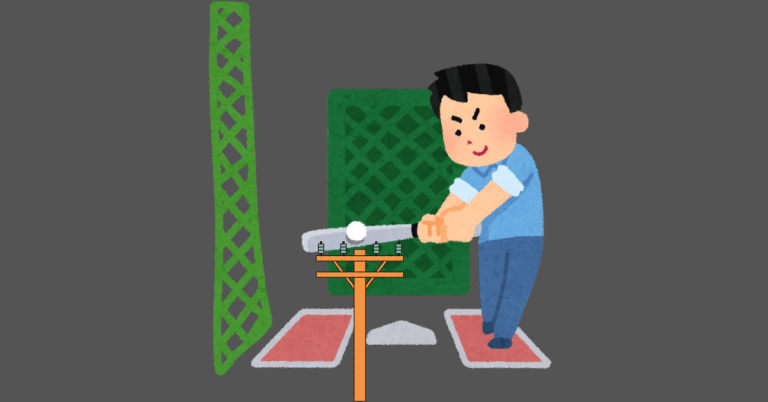How to Teach Hitting to Little League Players: 7 Easy Steps (2025 Coach’s Guide)
Teaching hitting in Little League doesn’t have to be overwhelming. Whether you’re coaching 7-year-olds or prepping 12-year-olds for All-Stars, this 7-step guide breaks down what matters: clear cues, fun drills, and age-appropriate expectations. Let’s build better hitters—without the chaos.

1. Set the Stage with Safety
Before any swings, create a safe, structured hitting area.
Check helmets, bats, screens, and netting. Mark zones, plan for heat, and make safety part of the routine. Confident hitters start with a safe space.
Positive Reinforcement: Praise kids for waiting their turn and following safety rules.
Pre-Practice Checklist: Helmets fit? Bats the right size? L-screens and nets in place? Walk the field for hazards (rocks, holes, gear).
Safety Zones: Use cones or chalk to mark “on deck,” “hitting,” and “waiting” zones. Explain to players where to stand and why.
Heat & Hydration: Remind players to bring water. Schedule water breaks, especially on hot days.
Routine: Start every session with a quick safety talk. Example: “What’s the number one rule? Don’t swing unless Coach says so!”
- Pre-Practice Checklist: Ensure helmets fit snugly, bats are the correct size and weight, and protective screens and netting are in place. Walk the field to remove hazards like rocks or debris.
- Safety Zones: Use cones or chalk lines to mark designated areas such as “on deck,” “batting,” and “waiting” zones to keep players organized and safe.
- Heat & Hydration: Encourage players to bring water bottles and schedule regular water breaks, especially on hot days.
- Routine: Start each practice with a quick safety briefing. Reinforce rules like “No swinging bats unless Coach says so” and “Always watch when others are hitting.”
- Positive Reinforcement: Praise players who follow safety rules and wait their turn patiently.
Coach’s Corner:
- Always model safety behavior yourself; kids take cues from you.
- Keep a first aid kit nearby and know basic first aid procedures.
- Use age-appropriate equipment to reduce injury risk.
Player Challenge:
- “Safety Star” Award: At the end of practice, recognize the player who demonstrated the best safety habits with a small prize or shout-out.

2. Nail the Stance with Visual Cues
Use simple comparisons that kids understand:
- “Stand like a surfer”
- “Bat like a sword”
- “Eyes on the pitcher”
Draw feet outlines or use cones. A consistent stance is the foundation of every great swing.
- Demonstrate: Show the stance yourself or use a skilled player as a model.
- Visuals: Place footprints or tape on the ground to guide foot placement.
- Analogies: “Bend your knees like you’re riding a skateboard.” “Pretend you’re sitting on an invisible stool.”
- Checkpoints: Feet shoulder-width apart, knees slightly bent, bat up and back, eyes on pitcher.
- Quick Fixes: If a player’s stance looks off, gently adjust their feet or posture and explain why.
- Demonstrate: Show the stance yourself or use a skilled player as a model.
- Visuals: Place footprints or tape on the ground to guide foot placement.
- Analogies: “Bend your knees like you’re riding a skateboard.” “Pretend you’re sitting on an invisible stool.”
- Checkpoints: Feet shoulder-width apart, knees slightly bent, bat up and back, eyes on pitcher.
- Quick Fixes: If a player’s stance looks off, gently adjust their feet or posture and explain why.
Coach’s Corner:
- Watch for players who stand too stiff or too wide. Encourage a relaxed, athletic posture.
- Use a mirror or record a video so kids can see their stance – self-awareness speeds learning.
- Remind players to keep weight balanced on the balls of their feet, not heels.
Player Challenge:
- “Surfer Stance Contest”: Have players hold their surfer stance for 10 seconds without wobbling. Reward balance and focus with fun stickers or high-fives!

3. Simplify the Grip
Teach the door-knock knuckle alignment and use the “toothpaste squeeze” pressure scale (5 out of 10).
Tape the bat or use the high-five drill for hand placement. No more death grips—or noodles.
- Demonstrate Door-Knock Knuckles: Hold the bat and show how the knuckles line up.
- Grip Pressure Drill: Have kids squeeze the bat tightly, then too loosely, then “just right” (like holding a tube of toothpaste).
- High-Five Drill: Have players “high-five” the bat with their top hand, then grip.
- Bat Tape: Use colored tape to mark where hands should go.
- Common Mistakes: Watch for “death grips” or hands too far apart; correct gently.
- Demonstrate Door-Knock Knuckles: Show how the knuckles on both hands should line up for a natural grip.
- Grip Pressure Drill: Have players squeeze the bat too tight, too loose, then “just right” (like holding a tube of toothpaste).
- High-Five Drill: Players “high-five” the bat with their top hand before gripping to ensure correct hand placement.
- Bat Tape: Use colored tape to mark where hands should go.
- Common Mistakes: Watch for “death grips” or hands too far apart; correct gently.
- Coach’s Corner:
- Reinforce that a relaxed grip helps with bat speed and control.
- Encourage players to check their grip before every swing.
- Use fun analogies like “Hold the bat like you’re shaking hands with it.”
- Player Challenge:
- “Grip Detective”: Have players check each other’s grips and give a “thumbs up” when it looks perfect.

4. Train Swing Path with Stories
Forget jargon. Say:
- “Hands are the train, ball is the station”
- “Short tracks, not loops”
Try the Fence Drill or Pool Noodle Path to build clean swings without overthinking.
- Storytelling: “Your hands are the train; the ball is the station. Get there quick, not in a big circle.”
- Fence Drill: Stand a bat’s length from a fence. Swing without hitting the fence to keep the path short and direct.
- Pool Noodle Drill: Hold a pool noodle as a target for the bat to follow.
- Short, Simple Cues: “Knob to the ball.” “Short to it, long through it.”
- Video Feedback: Use a phone to record swings and show kids what a good path looks like.
- Storytelling: Use simple stories like “Your hands are the train; the ball is the station. Get there quick, not in a big circle.”
- Fence Drill: Stand a bat’s length from a fence and swing without hitting it to encourage a short, direct path.
- Pool Noodle Drill: Use a pool noodle as a target for the bat to follow.
- Short, Simple Cues: “Knob to the ball.” “Short to it, long through it.”
- Video Feedback: Record swings and show kids what a good path looks like.
Coach’s Corner:
- Keep cues simple and consistent.
- Use positive language and avoid technical jargon.
- Encourage kids to feel the swing path rather than overthink it.
Player Challenge:
- “Train Conductor”: Have players swing while imagining their hands as a train traveling straight to the ball station. Reward smooth swings.

5. Fix the Usual Flaws—Fast
Head pulling, stepping out, early hips—it’s all fixable.
Use tape lines, visual targets, and body cues (“hide your belly button”). Make fixes into games, not lectures.
- Common Flaws: Head pulling, stepping out, dropping hands, early hip rotation.
- Visual Aids: Tape a line on the ground for stride direction. Use cones or targets for focus.
- Body Cues: “Hide your belly button from the pitcher” to prevent opening up too soon.
- Games: Turn corrections into challenges (e.g., “Can you keep your head still for 5 swings in a row?”).
- Encouragement: Praise effort and improvement, not just results.
- Common Flaws: Head pulling, stepping out, dropping hands, early hip rotation.
- Visual Aids: Use tape lines on the ground for stride direction and cones for focus points.
- Body Cues: “Hide your belly button from the pitcher” to prevent opening up too soon.
- Games: Turn corrections into challenges, e.g., “Can you keep your head still for 5 swings in a row?”
- Encouragement: Praise effort and improvement, not just results.
Coach’s Corner:
- Address one flaw at a time to avoid overwhelming players.
- Use positive reinforcement and keep corrections brief.
- Be patient; habits take time to change.
Player Challenge:
- “Freeze Head”: Challenge players to keep their head still during swings. Count successful attempts and celebrate progress.

6. Teach Based on Age, Not Just Skill
🔹 Ages 7–8: Fun and contact
🔹 Ages 9–10: Add timing and balance
🔹 Ages 11–12: Introduce power, angles, and approach
Coaching isn’t just instruction—it’s translation. Match your methods to their mindset.
- Ages 7–8: Focus on fun, making contact, and basic stance. Use soft toss, wiffle balls, and lots of encouragement.
- Ages 9–10: Introduce timing (load and stride), balance drills, and simple cues for swing mechanics.
- Ages 11–12: Add power elements (using hips), approach (where to hit the ball), and situational hitting.
- Adaptation: If a player is struggling, simplify. If they’re excelling, add a challenge.
- Communication: Use age-appropriate language and keep instructions brief.
- Ages 7–8: Focus on fun, making contact, and basic stance. Use soft toss, wiffle balls, and lots of encouragement.
- Ages 9–10: Introduce timing (load and stride), balance drills, and simple swing mechanics.
- Ages 11–12: Add power elements (hip rotation), approach (where to hit the ball), and situational hitting.
- Adaptation: Simplify or challenge based on individual progress.
- Communication: Use age-appropriate language and keep instructions brief.
Coach’s Corner:
- Avoid pushing advanced concepts too early.
- Celebrate small wins to build confidence.
- Tailor drills to individual needs within age groups.
Player Challenge:
- “Level Up”: Create badges or certificates for mastering skills appropriate to each age group.

7. Use Practice Plans That Actually Work
Keep it short, structured, and fun:
- 30-min plan: stance, tee, toss, BP
- 3-station rotation: every 10 minutes
- Weekly flow: Mon = mechanics, Wed = reps, Fri = fun
End on a positive every time.
- Sample 30-Minute Plan:
- 5 min: Stance and grip review (mirror drills)
- 10 min: Tee work (focus on swing path)
- 10 min: Soft toss or front toss (contact)
- 5 min: Fun game (hit the target, home run derby)
- Stations: Divide into small groups; rotate through tee, toss, and live BP.
- Weekly Themes: Monday = mechanics, Wednesday = reps, Friday = fun competitions.
- End on a Win: Finish with a challenge everyone can succeed at (e.g., “Everyone gets a hit!”).
Tip:
For each section, add a “Coach’s Corner” with troubleshooting tips or a “Player Challenge” to keep things interactive.
- Sample 30-Minute Plan:
- 5 min: Stance and grip review (mirror drills)
- 10 min: Tee work (focus on swing path)
- 10 min: Soft toss or front toss (contact)
- 5 min: Fun game (hit the target, home run derby)
- Stations: Divide players into small groups; rotate through tee, toss, and live BP every 10 minutes.
- Weekly Themes: Monday = mechanics, Wednesday = reps, Friday = fun competitions.
- End on a Win: Finish with a challenge everyone can succeed at.
- Coach’s Corner:
- Keep practices short and focused to maintain energy.
- Prepare drills ahead of time to maximize practice flow.
- Use positive reinforcement to keep morale high.
- Player Challenge:
- “Practice MVP”: Award a “Most Valuable Player” each practice for effort, improvement, or attitude.

💭
Here are some motivational tips tailored for youth baseball coaches to help you inspire and engage your players effectively:
Motivational Tips for Coaches
Have Extra Equipment Ready
Ensure players aren’t held back by missing gear. Having extras on hand shows you care and keeps everyone involved6.Final Thoughts
Know Your Players Personally
Take time to learn about each player’s interests, background, and what motivates them individually. This builds trust and helps you tailor your coaching approach to each child’s needs26.
Use Positive Reinforcement Frequently
Catch players doing things right and praise them often with simple, genuine comments like “Great hustle!” or “Nice swing!” This boosts confidence and encourages continued effort62.
Set Clear Expectations and Structure
Tell players what you expect during practice and games, and outline how time will be spent. This clarity helps players focus and take ownership of their effort41.
Keep Practices Fun and Engaging
Incorporate games, challenges, and friendly competitions to maintain energy and interest. For example, hitting targets during batting practice or fielding games with rewards can motivate players who might otherwise lose focus51.
Be Calm and Lead by Example
Maintain a composed and positive demeanor, even during mistakes or tough moments. Your attitude sets the tone and helps players stay relaxed and confident6.
Adapt Your Motivational Style
Recognize that not all players respond the same way-some need encouragement, others respond to gentle correction or challenge. Build relationships to understand what works best for each player2.
Celebrate Effort Over Results
Applaud trying hard and improvement, not just outcomes. This encourages a growth mindset and resilience in young athletes26.
Create Team Camaraderie
Use team huddles to share positive moments and ideas, encourage players to support each other, and foster a sense of belonging5.
Provide Opportunities for Leadership
Delegate roles like “kid of the day” to lead warm-ups or help organize drills. This builds responsibility and motivation5.
You don’t need 20 drills or a biomechanics degree. You need consistency, energy, and a plan. These 7 steps give you a simple framework to help any young hitter build better mechanics—and more confidence at the plate.






